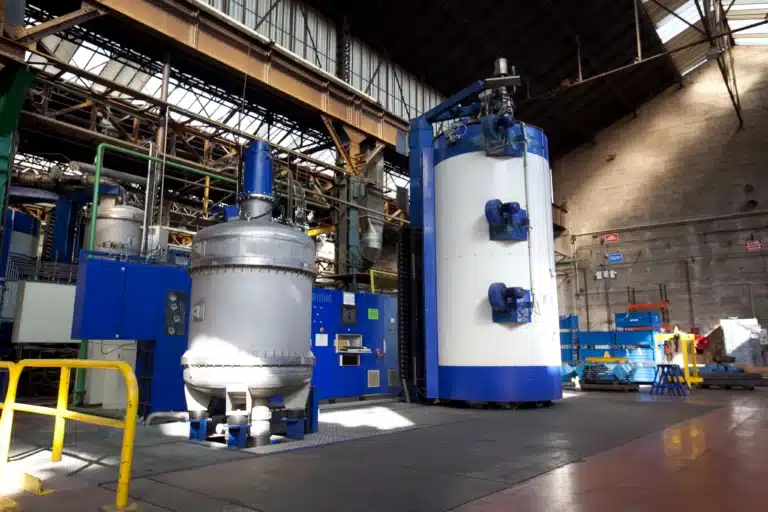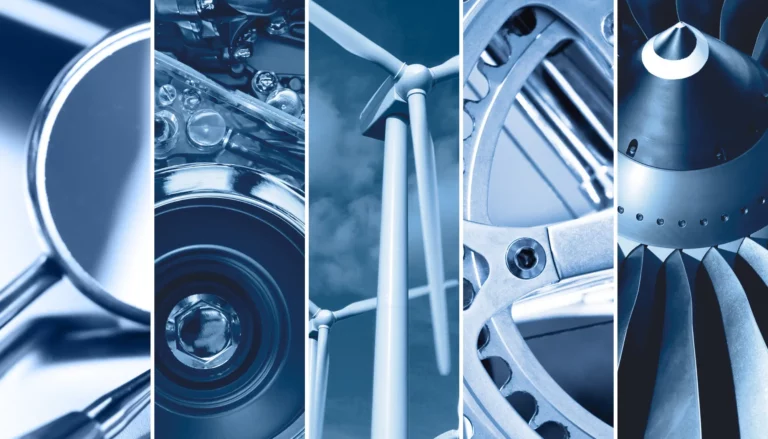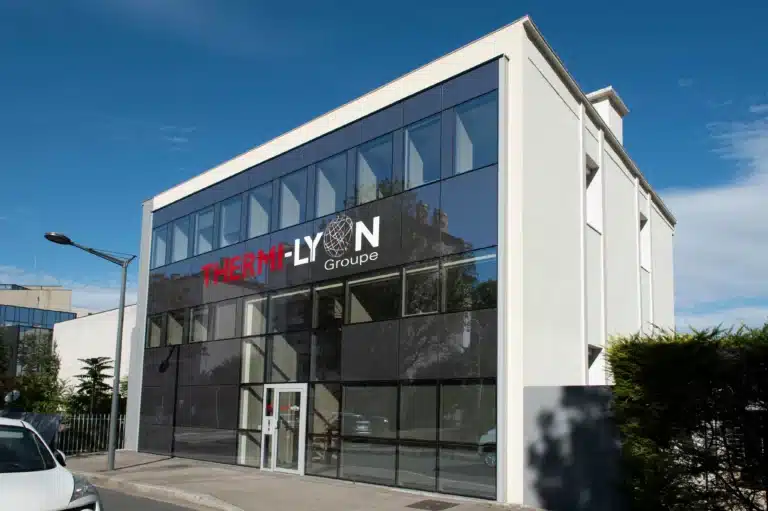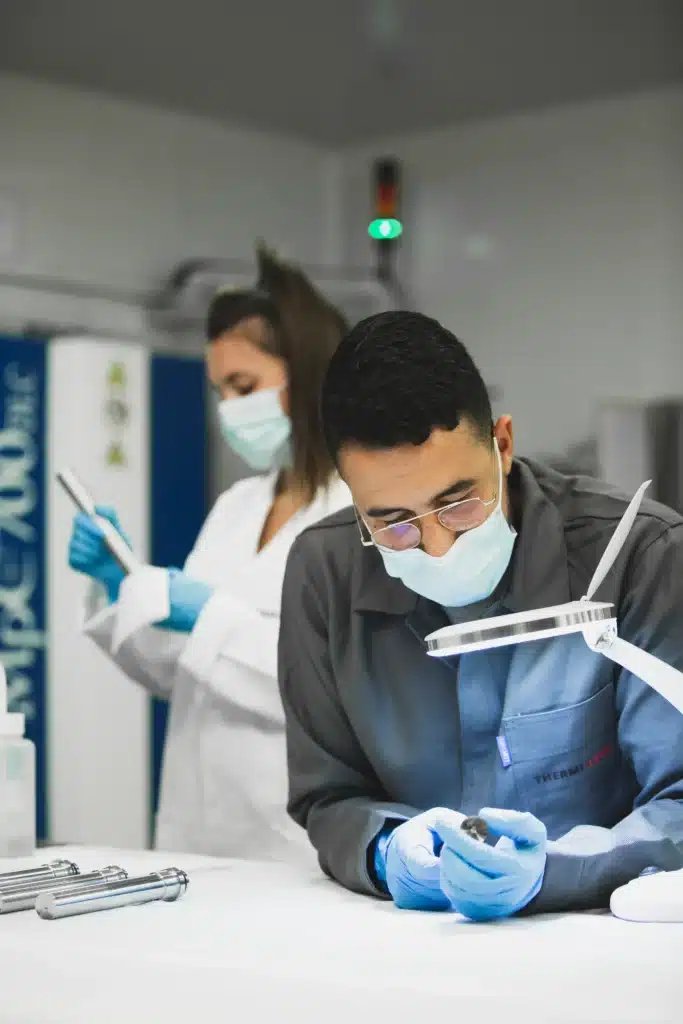Stainless steel is particularly present in our everyday environment: from cutlery to car engine components and storage tanks, its resistance to corrosion makes it an ideal material for many uses. Nevertheless, corrosion can take many forms and impact steel in many ways. That's why there are, in fact, different types of stainless steel and just as many heat treatments to improve and reinforce their natural properties.
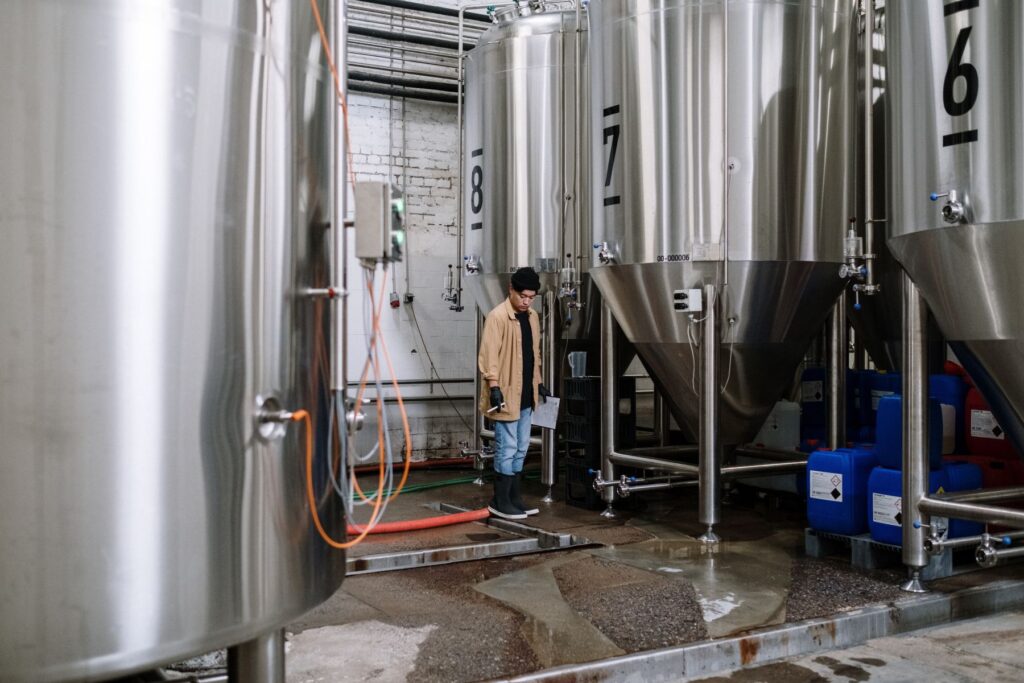
4 main types of stainless steel
Stainless steel consists mainly of three chemical elements. is distinguished by its exceptional corrosion resistance, essential in many applications,Firstly, steel itself is an alloy of iron and carbon. To significantly improve its corrosion resistance, chromium is added to the iron-carbon alloy. Once the alloy contains at least 10% chromium (or even 12%), it is referred to as stainless steel. Other chemical elements are added according to specific objectives.
To make a steel stainless, all that's needed is to form a protective layer of chromium oxide on its surface. This gives the metal excellent resistance to corrosion, and offers the major advantage of self-healing. In other words, it naturally covers the entire surface of the steel and, in the event of a scratch, regenerates itself. This is known as a passivation layer. However, there are other ways of reinforcing steel's resistance to corrosion. For example, it is possible to modify its carbon content or incorporate other alloying elements such as nickel, molybdenum or titanium, thus adapting the alloy to specific environmental conditions and increasing its resistance.
As a result, there are different families and types of stainless steel, depending on their chemical composition. These are grouped into four distinct categories:
- Martensitic stainless steels, hard and with a high carbon content.
- Ferritic steels, stable and resistant at low temperatures.
- Austenitic steels, offering high strength and flexibility in terms of application thanks to their high chromium and nickel content.
- Austeno-ferritic steels, combining the properties of the previous two for optimized performance.
Different stainless steels for different types of corrosion
In fact, there are different types of stainless steel to resist different types of corrosion. These alloys, mainly made up of iron and chromium, and often enriched with nickel, molybdenum or titanium, offer unique properties that make them ideal for various aggressive environments. For example:
- Atmospheric corrosion : due to ambient outside air, this often requires austenitic steels, renowned for their high chromium and nickel content, which favors the formation of a protective chromium oxide layer.
- Marine corrosion: exposure to salt water requires ferritic steels or austenitic steels enriched with molybdenum for better resistance to pitting corrosion.
- Hot-air corrosion: martensitic stainless steels, with their high chromium, low-carbon composition, are used for their resistance to high temperatures and oxidation.
- Acid corrosion: stainless steel grades containing a high proportion of molybdenum are preferred for their ability to resist acid corrosion.
Depending on the environment, this forms in a specific way, and a suitable stainless steel must be selected. Indeed, the choice of material depends on the environmental conditions in which the part evolves, as much as on its mechanical constraints. There is therefore no universal solution, but rather more or less ideal options depending on the situation.
Which heat treatment for which stainless steel?
As there are several types of stainless steel, there are also different heat treatments to match.
Quenching and tempering for martensitic stainless steels
Martensitic stainless steels, made mainly from an alloy of iron and carbon, are based on the formation of martensite. This constituent is formed by quenching and tempering. Parts are heated to very high temperatures before being rapidly cooled in an oil bath or under neutral gas. This method enhances the steel's mechanical strength and guarantees excellent hardness.
In general, hardening and tempering can increase hardness by a factor of three, from 20 to 60 Rockwell for the same part, depending on the chemical composition of the stainless steel. This treatment is widely used in the manufacture of plastic injection molds, which can release chlorinated or fluorinated products during the manufacture of plastic parts such as PVC or Teflon, for example. This process releases corrosive gases that martensitic steel can withstand. However, during treatment, this type of steel can lose some of its natural resistance to corrosion. It is therefore not necessarily the ideal material for the environment in which the parts will have to operate. This family of stainless steels is also used in the manufacture of medical devices, but has a place in many other fields, thanks to its high strength and quality.
Nitriding and THERMI®-SP for austenitic stainless steels
Austenitic steel, which consists mainly of iron and contains alloying elements such as chromium and nickel, is the world's most widely used stainless steel. Extremely resistant to corrosion, it is used for tableware, plumbing fittings and valves, as well as in the food industry for its biocompatibility. Indeed, most storage tank components for food and beverages are made of austenitic stainless steel. This biocompatible material is also used for medical devices
This steel is also very much in evidence in the automotive market, since, in addition to its excellent corrosion resistance, it possesses non-magnetic properties. This property is particularly useful in the manufacture of certain electromagnetic parts. Other applications include turbochargers and petrol injectors, to limit wear and corrosion caused by hot gases or fuel. Austenitic stainless steel does have its limitations, however, notably in terms of resistance to wear and seizure.
Nitriding can partially correct these natural shortcomings, but the formation of nitrides inevitably has an impact on corrosion resistance. To avoid this phenomenon, the ThermiLyon group has developed the Thermi SPtreatment, for S-Phase. This involves creating an S-phase on the surface of parts, i.e. diffusing carbon and nitrogen atoms into the steel without forming nitrides or carbides. This process also enhances steel's resistance to seizing, making it ideal for treating screws, nuts and other fasteners, as well as turbo and injector parts. This thermochemical treatment is also used to treat austenitic stainless steel parts for the food industry. Surface hardness can reach up to 1200HV, i.e. 6 times harder than the base material, enhancing equipment longevity and efficiency.
Nitriding for ferritic stainless steels
Ferritic stainless steel consists mainly of ferrite. It has good mechanical strength and corrosion resistance, but is subject to seizure and fretting. To improve its natural properties, Thermi-Lyon carries out high-temperature nitriding to introduce nitrogen into the steel without creating surface nitrides, thus maintaining the part's corrosion resistance. Finally, austenitic-ferritic steels represent a special case. These superalloys require a special treatment, developed by Thermi Lyon, which will be the subject of a separate publication.
Corrosion can take many forms, and can occur in different environments: seawater, ambient air, hot or acidic air, etc. This is why there are different types of stainless steel: martensitic, austenitic, ferritic and austeno-ferritic. These steels have a wide range of natural properties and therefore require very specific heat treatments, depending on the environment in which they are used and the mechanical stresses applied to them. For all these families of stainless steels, it is also possible to carry out PVD and DLC vacuum deposition.
In line with its commitment to offering the most appropriate solution for each of its customers, the Thermilyon group offers a complete range of heat treatments and vacuum deposition techniques, so that you can make an appropriate and objective choice.
